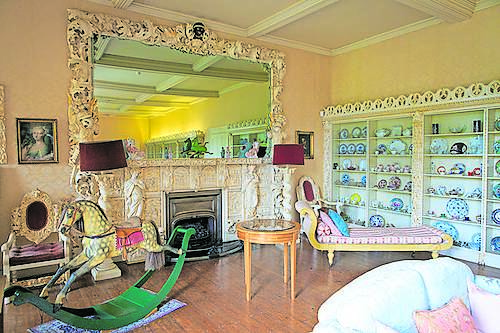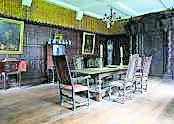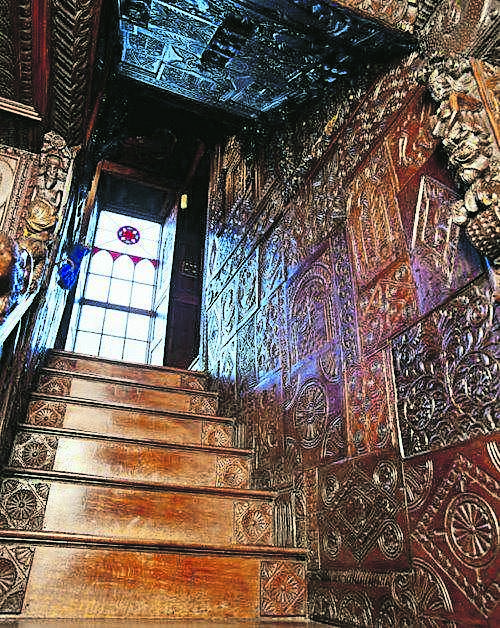
Age, rarity, condition and provenance – the four pillars of finding and acquiring antiques. I’ve found visiting historic houses that remain in private ownership to be an enjoyable and educational way of fine-tuning my antiquing skills. These houses represent the organic growth of a family residence over time, where each succeeding generation added things they found beautiful and useful. I’ve chosen three of my favourite houses in North Wales. They have an interesting story and reflect the owner’s tastes and interests. Go, visit, enjoy a day out. Find out how each owner chose the things for their home – the beauties of their time and the antiques of today. And, when you are in the neighbourhood, give us a call to make sure we are in and drop by the Banquet House in Rhuddlan. We would love to meet you, offer you a cup of tea, and talk about collecting and living with antiques.

Bodrhyddan Hall
The present building was remodelled in the 1690s. The original house was obtained from King Henry VIII at the time of the dissolution of the monasteries when the abbot and his flock relocated to another site at Hendre Farm nearby. The house is known for its collection of armour and militaria; however, the 9th Lord Langford, who died in 2017 at the age of 105, collected ceramics and added many pieces of tourist souvenir ceramics from places he visited. Those tourist pieces are displayed alongside Minton, Royal Doulton and Wedgwood pieces of great value.

Plas Newydd (Llangollan)
Plas Newydd is in the town of Llangollen, Denbighshire, Wales, and was the home of the Ladies of Llangollen, Lady Eleanor Butler and Sarah Ponsonby, for nearly 50 years. Their story is most romantic and the house reflects their collecting interests. The most unusual feature is the panelling made of pieces of reclaimed oak carvings collected by the ladies and set in a patchwork style over much of the interior of the house. The carvings came from broken-up furniture and church fittings, ranging from medieval to Baroque, dominated a vernacular folk and Jacobean styles.
Gwydr Castle
During the 16th and 17th centuries the Gwydir Estate belonged to the Wynn family. The Wynn’s were closely associated with the courts of Charles I and Charles II. In the early 20th century, the castle and its contents were sold and key components of the interior were purchased by William Randolph Hearst and taken to storage in warehouses in New York City. The castle is now privately owned by Peter Welford and his wife, Judy Corbett. They purchased the castle in 1994. They then began a programme of conservation with authenticity as the main consideration. Part of that programme was identifying, locating, and acquiring pieces that had been sold. A key find was the contents of the dining room.
With the assistance and support of Prince Charles, the dining room was acquired from the Metropolitan Museum of Art in NYC, to which it had been donated by Mr. Hearst. The restoration continues, funded primarily by the current owners according to their philosophy. “Ancient houses like Gwydir are the sum of their parts, historical as well as architectural. But in addition, they evolve a particular frequency, over the centuries, which is specific to nowhere else. Gwydir has its own time, its own smell, its dense and layered atmosphere, which amounts to the metaphysical equivalent of its archaeology; this represents, in short, the soul of the house.”

